HOA 3 - CHINESE ARCHITECTURE REVIEWER
1/66
Earn XP
Description and Tags
CHINESE ARCHITECTURE
Name | Mastery | Learn | Test | Matching | Spaced |
|---|
No study sessions yet.
67 Terms
palaces and temples
Chief building type of chinese architecture
(1) wood frame (2) bilateral symmetry (3) hierarchy of buildings (4) cosmological concepts
chinese architecture architectural features
Northern regions
More abundant stone and earth resources led to buildings with rammed earth walls or brick construction.
southern regions
wood was more plentiful, and timber-frame strcutures become dominant. the use of bamboo was also common in these areas
rammed earth
a technique for constructing foundations, floors, and walls using compacted natural raw materials such as earth, chalk, lime, or gravel
kang
an elevated heated platform
southern china
hot and humid weather prompted open, airy structures with large eaves to provide shade and encourage airlow
eastern coastal regions
these areas had to deal with typhoons so homes were designed with steep roofs to allow rain to quickly run off and avoid damage
han dynasty
marked the beginning of many typical chinese architectural elements like courtyards and symmetry. this period also saw the construction of great wall
tang dynasty
a golden age of chinese architecture, known for buddhist temples and the development of multi-storied pagodas
song dynasty
innovations in construction techniques such as bracket systems that allowed for larger buildings with broader, curving roofs
ming dynasty
known for grandiose palatial architecture with an emphasis on balance, harmony and symbolism
qing dynasty
saw further refinement of traditional chinese elements and an increase in western influence
confucianism, buddhism, taoism/daoism
three religion and philosophy that influence chinese architecture
confucianism
focused on hierarchy and harmony
confucian architecture
emphasized order, formality, and a sense of hierarchy
example of confucianism, kaohsiung confucius temple

buddhism
introduced pagodas, stupas, and monasteries
pagoda
this design was symbolic, representing the connection between heaven and earth
example of buddhism, Hall of Guanyin is the most important annex halls in Chinese Buddhist temples
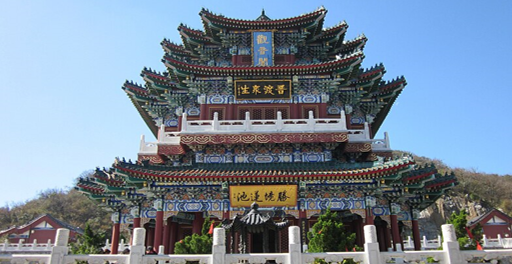
taoism/daoism
advocated for harmony with nature
example of taoism, mount laojun in luoyan, henan province, china
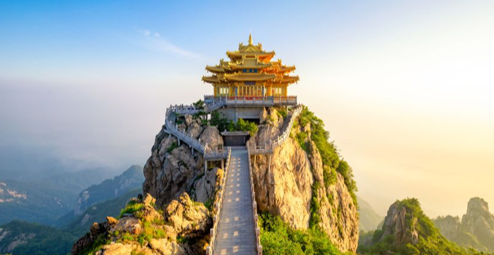
confucianism
the least noisy, colorful, and lively of all chinese temples
buddhism
usually contain the same combination of fairly recognizable important deities
taoist
tend to be the most colorful and snazzy
(1) palaces (2) temples and monasteries (3) tombs and mausoleums (4) pagodas (5) residential courtyards (6) city walls and fortification
six ancient structures
palaces
these grand complexes, like the forbidden city, were designed with strict adherence to hierarchial and symbolic principles
forbidden city
a palace complex inclusing temples, reception halls, residences, and service buildings
palace of heavenly purity
the residence of the son of heaven and the conceptual center of the empire
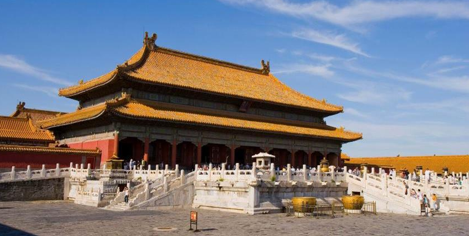
hall of supreme harmony
emperor’s throne room; also where he met daily with his officials
mingtang
bright hall
biyong
jade ring moat
mingtang
a ritual structure that serves as the symbolic center of imperial power
mingtang
designated as the intersection of heaven and earth oriented around the four cardinal directions
temples and monasteries
Religious buildings, such as Buddhist temples, Daoist temples, and Confucian academies, were built with spiritual significance
temple of heaven
it symbolizes the relationship between heaven and earth
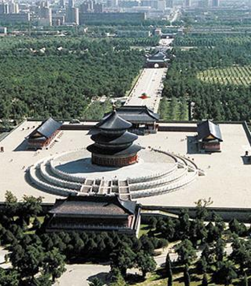
tombs and mausoleums
The most famous of these is the Mausoleum of the First Qin Emperor, which includes the Terracotta Army. Ancient Chinese tombs were typically large, mound-like structures reflecting the belief in the afterlife.
terracotta army inside the tomb of the first qin emperor
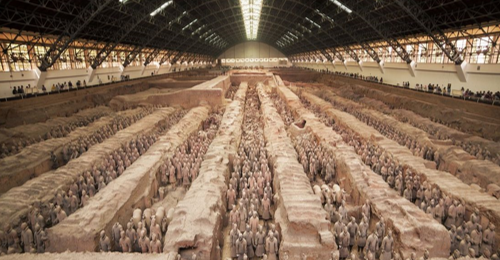
pagodas
Tall, multi-storied towers introduced from India through Buddhism
(1) songyue pagoda (henna) (2) iron pagoda (kaifeng)
two examples of pagodas
songyue temple
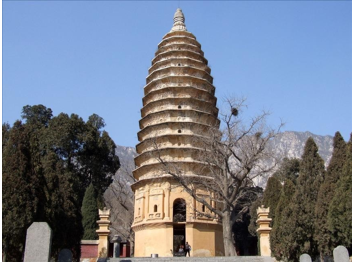
ta
a chinese pagoda
fogong pagoda, 200ft high pagoda made entirely out of wood
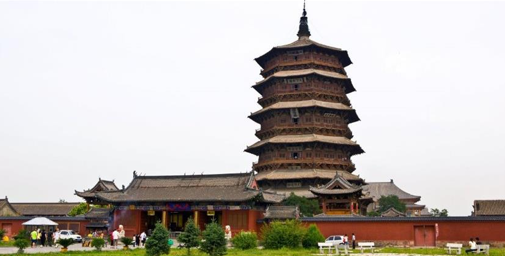
residential courtyards (siheyuan)
These were traditional residential compounds designed around a central courtyard, prevalent among wealthy families and officials. They are a hallmark of Beijing’s hutongs.
the great wall of china
example of city walls and fortifications
great wall of china
has an incomparable symbolic significance in the history of china. its purpose was to protect china and also served as a means of communication
pailou
monumental gateway to a palace, tomb, or sacred place
zhonglou
bell tower or pavilion at the right side of a city gate, palace entrance or forecourt of a temple
gulou
left side counterpart of zhonglou

five particular methods for construction
dougong
interlocking bracket system used in traditional chinese construction to support roof beams
jian
basic measure in construction
siheyuan
courtyard housing
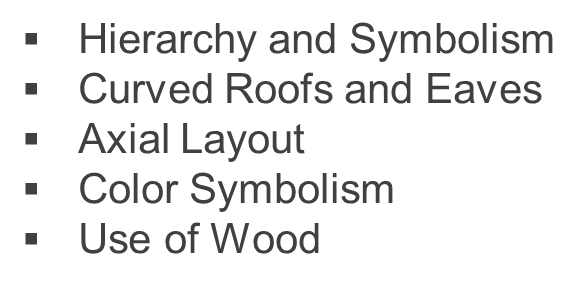
five characteristics that define chinese architecture
green - wood
yellow - earth
blue and black - water
white and gray - metal
red - fire
connotations of colors
carved and painted beams and ceiling
Intricate carvings and paintings on beams, ceilings, and eaves were common in temples and palaces.
roof ornament
These decorations were meant to protect the building and its inhabitants from evil spirits.
chiwen
a mythical fish often placed at the roof’s edge was believe to ward off fires
glazed ceramic tiles
The use of _____, often in yellow, green, and blue, was common in palaces and temples.
stone lions(shishi)
Pairs of _____ were placed in front of important buildings to symbolize strength and protection
lattice windows
typically made from wood, were decorated with geometric or floral patterns.
reliefs and sculptures
These sculptures were not only decorative but often held spiritual meaning, intended to bring good fortune or safeguard against evil.
feng shui
Buildings were often aligned along cardinal directions to ensure good energy flow.
modular design
The buildings were often composed of modular units, allowing flexibility and ease of expansion or reconstruction.
blending with nature
Ancient Chinese architecture often sought to harmonize with the natural environment, especially in garden designs.
feng shui, modular design, blending with nature
three manners of design
feng shui
wind water